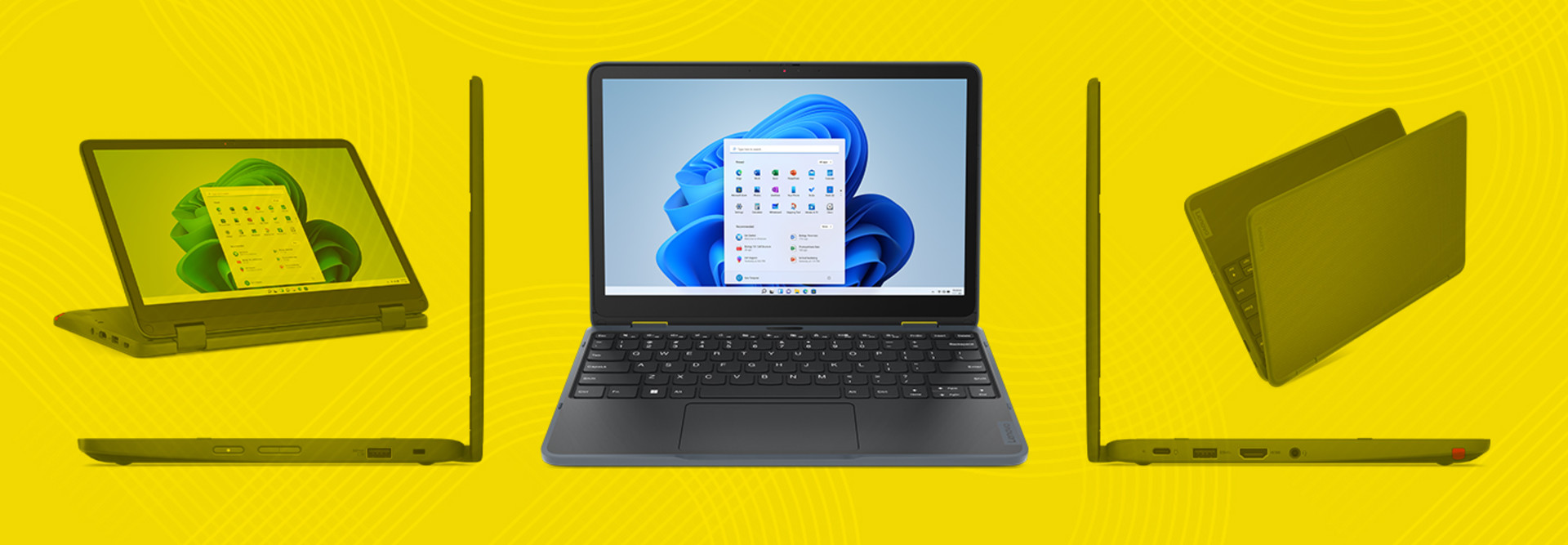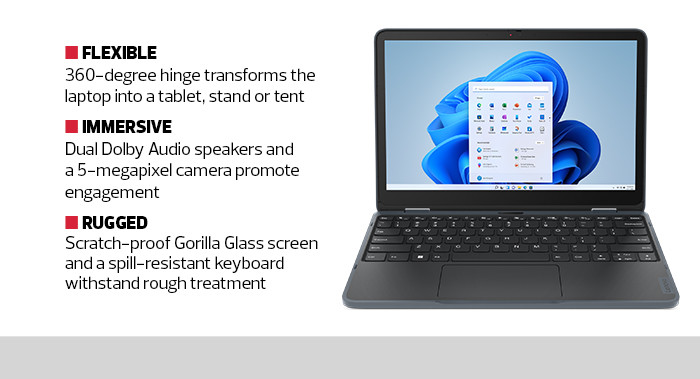300w Yoga Gen 4 Allows Damage-Free Writing on the Screen
The Yoga’s screen is also special. In addition to providing a sharp, high-contrast LED display, it’s also an in-plane switching touch screen. Constructed of Gorilla Glass enhanced with a new technology that Lenovo calls “pencil touch,” the screen allows students to use a standard No. 2 pencil on the screen without fear of damaging or scratching the glass.
In my testing, it felt completely natural to interact with the screen that way, and the Yoga showed no signs of damage, even after repeated and prolonged use.
DISCOVER: Essential classroom technology to reduce digital overload.
New Chip Strikes a Balance Between Power and Economy
While all of the extra, classroom-focused features of the Yoga make it uniquely suited for use in K–12 education, it’s important to note that the core of the unit also performs well. Its new Intel N100 chip was just released in 2023 and seems to be a good choice for a classroom computer in how well it balances power and economy. Its base speed of 1 gigahertz can be temporarily boosted to 3.4GHz when needed, and it also includes Intel ultra high definition graphics support on the chip, which worked well in testing with various educational, productivity and collaboration software.
With its ability to fold into multiple physical configurations, the Lenovo 300w Yoga Gen 4 can assume the role of several devices. Other features — like having a screen that can be annotated using a standard No. 2 pencil — make it truly unique in education. Finally, its attractive price means many schools can likely afford to provide Yogas for every student.












